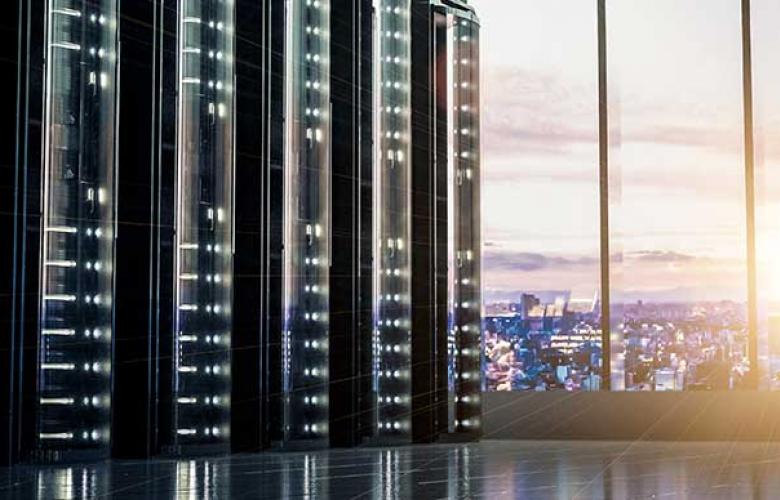How to address AI's energy demands? AI can help with that - JLL
Contact
How to address AI's energy demands? AI can help with that - JLL
Sustainability efforts are putting the focus on data centers.
Generative AI technologies that can turn simple phrases into stunning, photo-realistic images have sparked the world’s imagination.
They also require a substantial amount of energy. Researchers estimate that running one generative AI algorithm requires up to five times more energy than a regular search engine query. Just training ChatGPT took the same amount of energy as driving 123 combustion vehicles for one year.
With AI queries on the rise – openai.com alone pulled in 1.9 billion visits in May 2023, according to SimilarWeb – the boost in energy requirements matters. Heat emanating from data centers processing the queries is at odds with broader sustainability goals now common among companies and governments.
“Data center future-proofing and sustainability are inextricably linked,” says Colm Shorten, Senior Director for Data Center Global Strategy & Innovation at JLL. “We’re trying to satisfy a need for increased data processing, speed and efficiency, with an eye on the future sustainability roadmap – despite the two things pulling in opposite directions.”
Data centers aren’t the only commercial real estate sector where AI is making an impact. Occupiers and developers believe AI and generative AI will be among the top three technologies to have the greatest impact on real estate in the near future, according to a recent JLL survey.
However, the sheer level of data processing AI needs means data centers are at the forefront of an evolution required to keep pace. Independent research firm Dell’Oro Group suggests US$500 billion of future investment is required in digital infrastructure to handle soaring computing demand.
“As the AI gold rush gets underway, data centers are gearing up to better support increased power and performance requirements,” says Daniel Thorpe, Data Center Research Lead for JLL.
The heat is on
On average around 40% of energy currently consumed in data centers already comes from the air-cooling process required to stop hardware and racks overheating – and it can be more in warmer climates.
“New chips used to power faster machines for processing AI data run significantly hotter and present a challenge for conventional air-cooling solutions,” says Thorpe. “Keeping temperatures down will mean a shift to liquid cooling.”
However, Shorten believes AI could in part, solve this problem of its own making.
“Data centers have and will continue to embrace AI, for driving improved performance and operational efficiency in their facilities,” he says.
Half of all cloud data centers are expected to use AI by 2025 improving operating efficiency by 30%, according to Gartner. A study conducted by Lawrence Berkeley National Laboratory in collaboration with Google, found that AI-based control of data center cooling systems reduced energy consumption by up to 40%.
Shorten explains that AI provides greater levels of predictability and the opportunity to improve data center efficiency with dynamic workload management.
Significant energy savings can be achieved thanks to insights that maximize CPU use, effectively managing how and where data is processed, thereby reducing unnecessary consumption.
Where available, AI can even intelligently integrate renewable energy sources, managing the balance between renewable energy supply and data center workloads, to maximize the use of clean energy and minimize reliance on fossil fuel sources.
Supercharging data center sustainability
Despite increased investment in liquid immersion cooling, there’s still some way to go before it’s widely considered a reliable, safe and commercially viable solution. AI will be a key factor in advancing progress, helping operators move away from inefficient air cooling to this more sustainable technology, says Shorten.
Meta recently paused construction on several of its data centers, shifting the focus onto new AI powered facilities that will feature liquid cooled infrastructure - a method that Thorpe says is estimated to be up to 3,000 times more effective than air.
“As data centers face increased compliance regulation and corporates sign up to science-based net zero targets, all decisions must be evaluated via a lifecycle sustainability lens,” says Thorpe.
JLL recently found the top priority for data center managers is “becoming more sustainable and socially responsible” amid growing concern over the environmental impact of such facilities.
“We’re also seeing AI used to transform data center asset management with predictive maintenance programs, that optimize the lifespan of equipment and reduce waste from premature replacements,” says Shorten.
Ultimately, it’s AI's ability to analyze vast amounts of data, make intelligent predictions, and optimize resource allocation that will significantly enhance data center sustainability.
Shorten believes to meet future customer commitments, operators must transition to a hybrid data center model, featuring a mix of air and liquid cooling.
“Essentially AI is both driving and facilitating this new form factor,” he concludes. “The AI era is here and there is no going back, so let’s use it to help reduce carbon emissions and minimize where possible, the overall environmental footprint of data center operations.”







